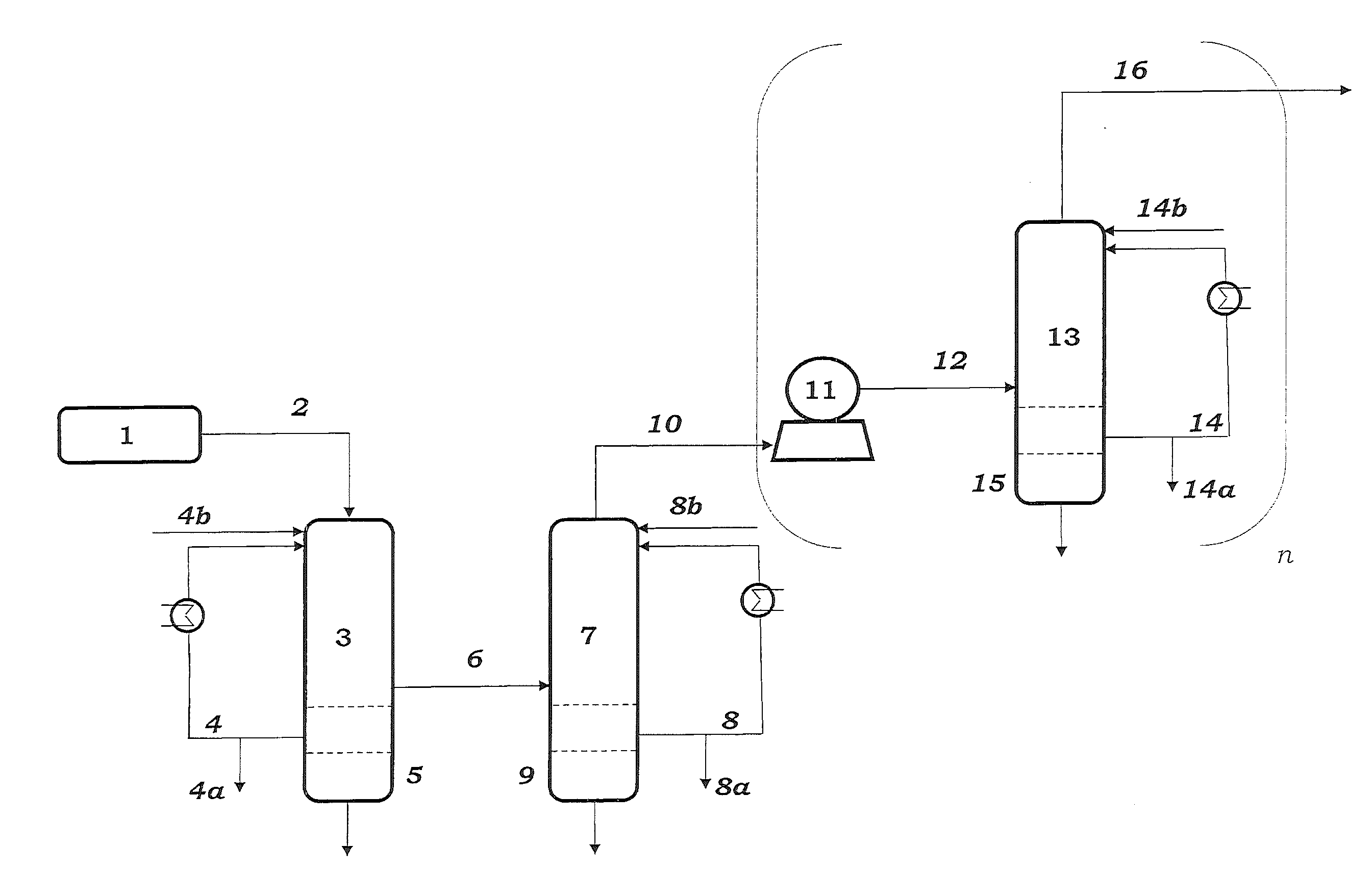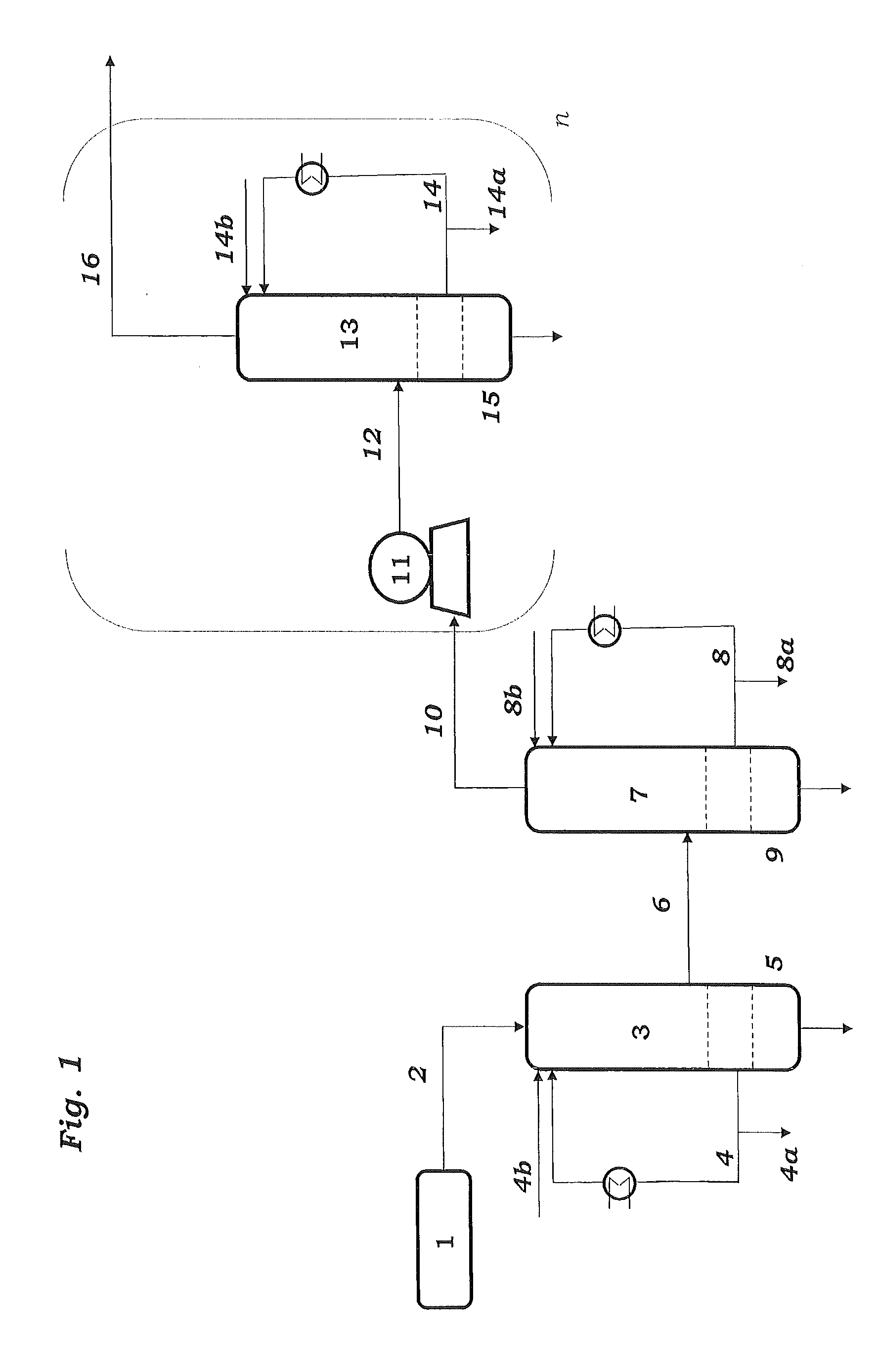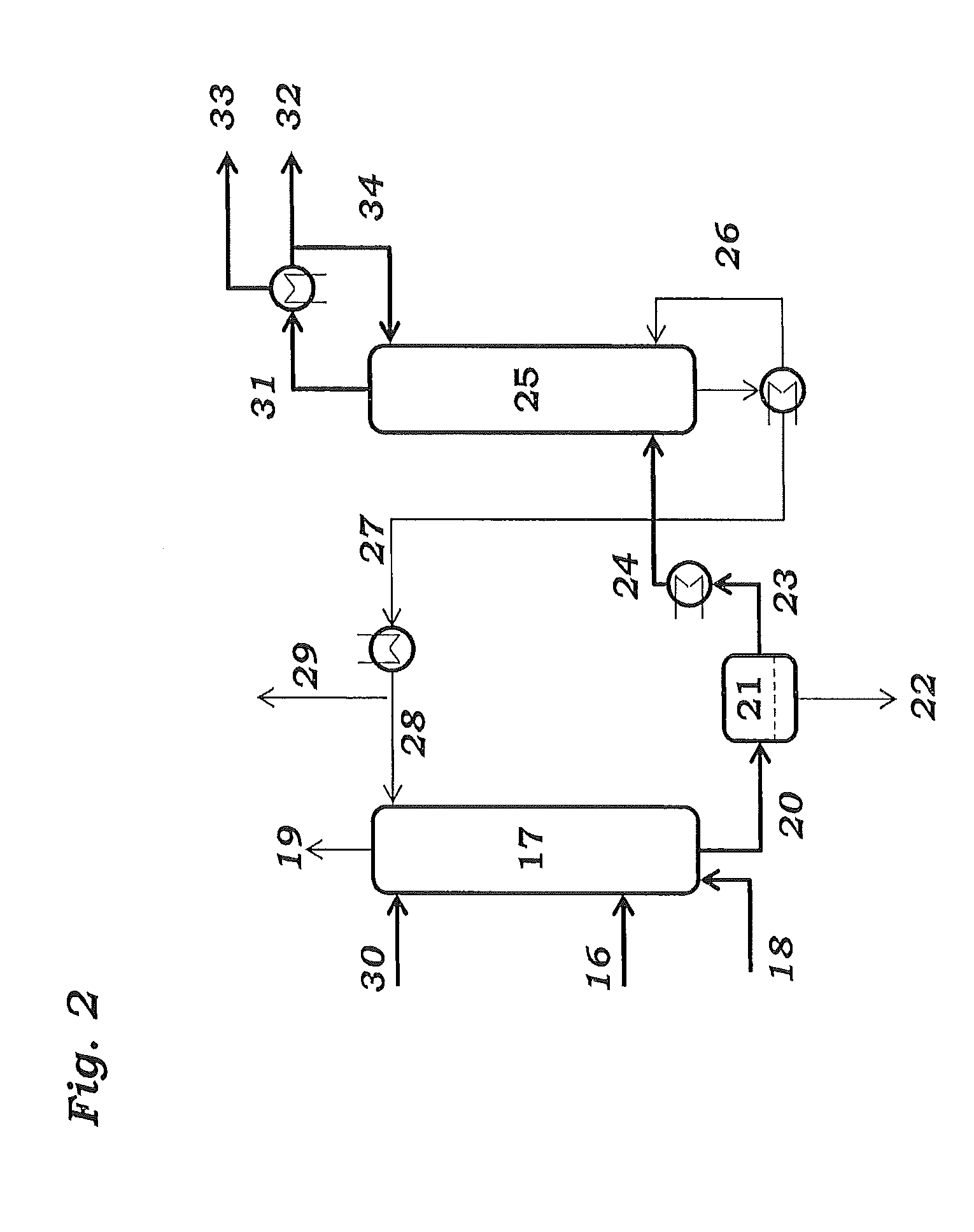Process for Preparing Butadiene by Oxidative Dehydrogenation of N-Butenes with Monitoring of the Peroxide Content During Work-Up of the Product
a technology of n-butene and oxidative dehydrogenation, which is applied in the direction of absorption purification/separation, instruments, chemical indicators, etc., can solve the problems of not having any information on the method of determining such organic peroxides, the presence of oxygen in addition to butadiene after the reactor stage in the work-up section of such processes, and the risk of fundamentally affecting the work efficiency of the process
- Summary
- Abstract
- Description
- Claims
- Application Information
AI Technical Summary
Benefits of technology
Problems solved by technology
Method used
Image
Examples
example 1
[0108]Samples are taken from streams 4, 8, 14 and 27 and passed to calorimetric analysis by means of DSC. The DSC analysis is carried out as follows: 10 mg of the sample are introduced under an inert gas atmosphere into a pressure-tight screw-cap crucible made of V4A. The crucible is closed so as to be gas tight under an inert gas atmosphere and introduced into the differential scanning calorimeter. A second, empty crucible is used as reference crucible. The two crucibles are heated using a heating ramp of 2.5 K / min. To maintain both crucibles at the same temperature, different heat flows are required. This is because of, firstly, the different heat capacity due to the different degree of fill of the two crucibles and, secondly, the endothermic and exothermic reactions taking place in the filled crucible. The heat of reaction can be calculated by integration of the differences in the heat fluxes caused by the reaction over time. The concentration of the peroxides is determined from ...
example 2
[0110]To determine the peroxide contents in the work-up section of the ODH reactor, samples were taken from streams 4 and 8 respectively, and passed to analysis. Analysis comprised both iodometric peroxide determination and DSC analysis. Mesitylen was used as a coolant in both of the quenching stages 3 and 7.
[0111]DSC analysis is carried out as follows: 3 to 13 mg of the samples is introduced under an inert gas atmosphere into a pressure-tight screw-capped crucible. The crucible is closed so as to be gas tight under an inert gas atmosphere and introduced into the differential scanning calorimeter. A second, empty crucible is used as reference crucible. The two crucibles are heated using a heating ramp of 2.5 K / min. To maintain both crucibles at the same temperature, different heat flows are required. This is because of, firstly, the different heat capacity due to the different degree of fill of the two crucibles and, secondly, the endothermic and exothermic reactions taking place in...
PUM
| Property | Measurement | Unit |
|---|---|---|
| temperature | aaaaa | aaaaa |
| boiling | aaaaa | aaaaa |
| differential scanning calorimetry | aaaaa | aaaaa |
Abstract
Description
Claims
Application Information
 Login to View More
Login to View More - R&D
- Intellectual Property
- Life Sciences
- Materials
- Tech Scout
- Unparalleled Data Quality
- Higher Quality Content
- 60% Fewer Hallucinations
Browse by: Latest US Patents, China's latest patents, Technical Efficacy Thesaurus, Application Domain, Technology Topic, Popular Technical Reports.
© 2025 PatSnap. All rights reserved.Legal|Privacy policy|Modern Slavery Act Transparency Statement|Sitemap|About US| Contact US: help@patsnap.com



